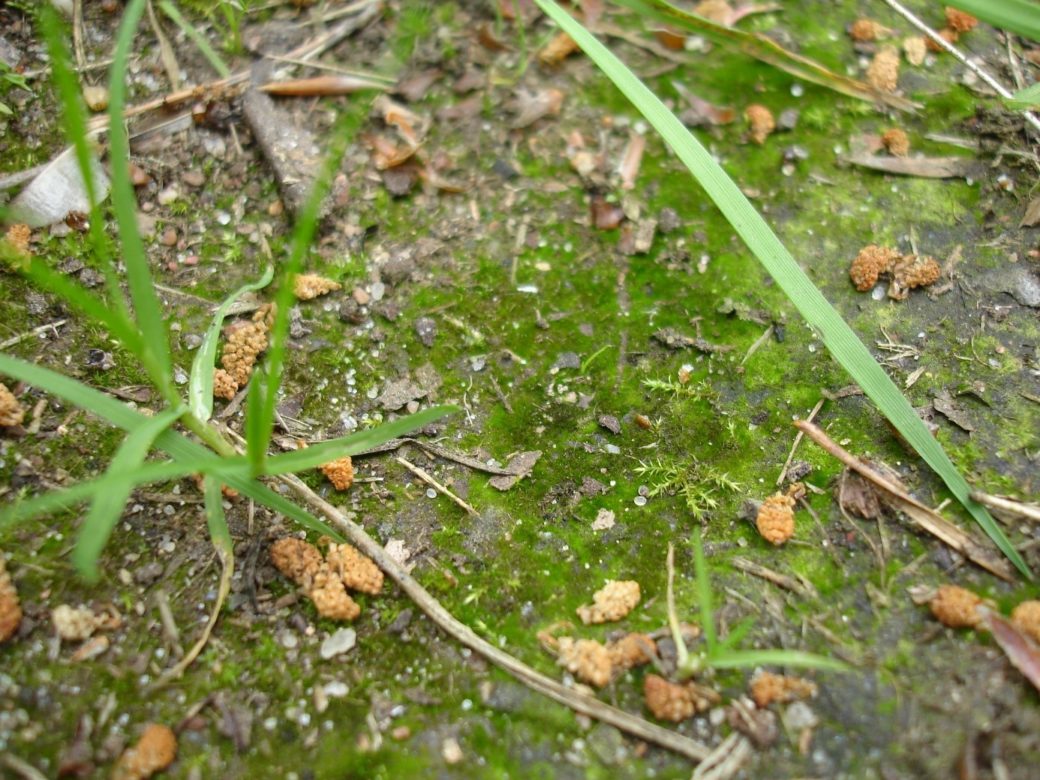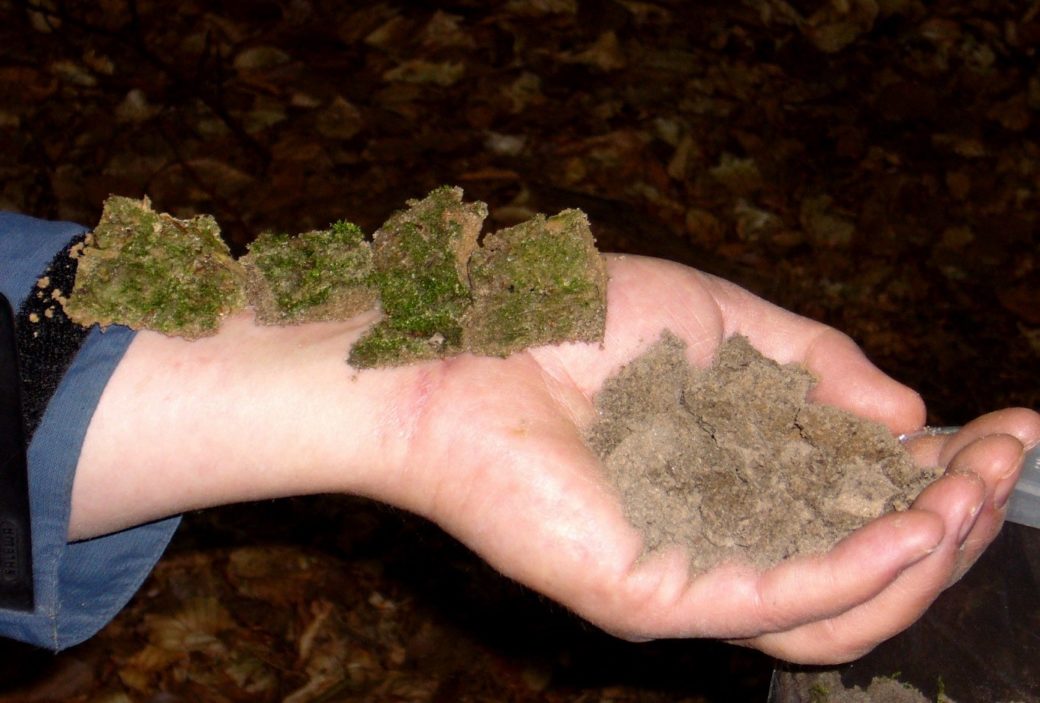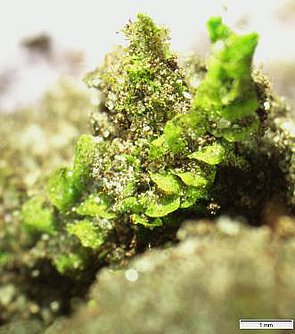Land use as a driver for structure and function of biological soil crusts III
Biological soil crusts are complex communities consisting of photosynthetically active green algae, cyanobacteria, bryophytes and lichens, heterotrophic fungi, protozoa and bacteria, which cover the top few millimetres of soil.
The organisms and their by-products create a micro-ecosystem, whose ecological function is of great importance in particular on bare soils (e.g., nitrogen fixation by cyanobacteria, primary production, water retention, soil stabilisation or allocation of plant-available nutrients).
Although soil crusts are ecologically important, to date research has mainly focussed on arid and semi-arid habitats. In the first phase, we focused on the biodiversity in soil crusts and their function in biogeochemical phosphorus turnover. These correlations were analysed in greater depth during the second phase. In the current phase, spatial distribution of nutrient turnover in biocrusts will be examined as well as their recovery after ecosystem disturbance.
We will link the turnover of phosphorus and nitrogen within soil crusts to the abundance and diversity of genes encoding N and P transformation processes. These data will then be linked to crustal organism structure and compared to other microbial hotspots such as the rhizosphere and detritus sphere to understand interactions among all organisms in soil crusts from exploratory forest plots.
A combination of metagenomic and fatty acid profiling of the community structure of bacteria, archaea, fungi, cyanobacteria and algae will be evaluated for the first time in taxonomic depth (what is there in what numbers?). Further, we will use stable isotopes to identify nutrient hotspots in biocrusts and combine this with transcription analyses of microbial groups involved in N and P turnover (What happens where?).
The abundance and functional composition of biocrusts will be evaluated after severe surface disturbances due to tree felling will be analysed. The recovery of biocrusts will be related to their organismic diversity, the land-use intensity of the forest and biogeochemistry of P and N. The concentrations and chemical species of these elements will indicate whether BSCs act as sink or source for P-and N-compounds after disturbance (which does what?).
1. Biocrust communities play a key ecological role in the biogeochemical, often interlinked cycles of N, P and C in forests. Biocrust communities are involved in transformation from inorganic to organic fractions in the biogeochemical cycling of P and N.
2. Biocrust microorganisms prefer organic N molecules. A high availability of N will also increase the mobilisation of P in order to maintain intracellular N:P homeostasis of microorganisms.
3. Functional pattern of biocrusts depend less on the level of disturbance than on site-specific properties. Strong disturbance at plots with low silvicultural management intensity will result in a faster development of biocrusts.
4. Functional pattern of biocrusts differ from those of the rhizosphere and detritusphere at the same site (all microbial hotspots).
- Metagenomic and transcriptomic analyses
- Amplicon Sequencing of 16S rRNA and 18S rRNA genes
- qPCR targeting specific genes for N- and P-turnover
- Fatty acids analyses
- Total C, N, P determination
- NanoSIMS and stable isotopes
We found biocrusts especially at disturbed places in the forests, such as skid trails, at slopes and after wind fall or clear cutting. This indicates the important role of biocrusts as first (pioneer) colonisers of free soil and their protective role against erosion. Biocrusts in forests inherit a high diversity of algae with filamentous species being most abundant. Further, we observed a specific bacterial community in the biocrust compared to bulk soil. In particular, the abundance of cellulose-degrading and bacterivore bacteria was higher in biocrusts than in bulk soil.
Biocrusts were described to accumulate carbon and nitrogen in the top soil layer. We could confirm this finding within the exploratories and further extend the current knowledge: biocrusts also enrich phosphorus, especially the organic fraction of P is enhanced. All genes involved in the P-cycling were found in higher abundance, indicating a faster biogeochemical P-turnover in the biocrust compared to bulk soil.












